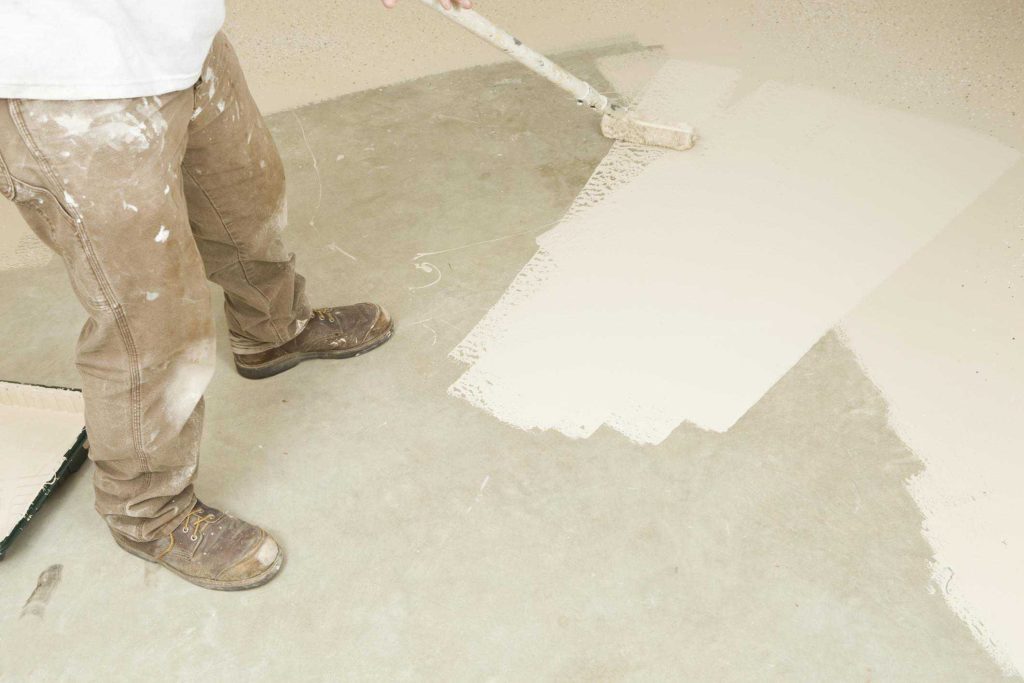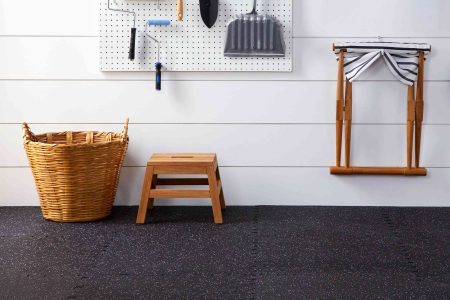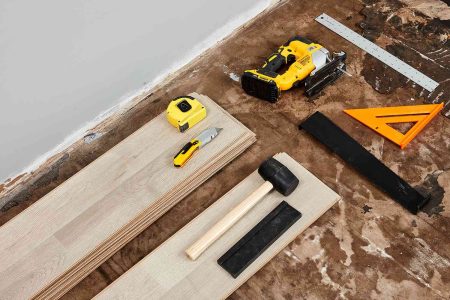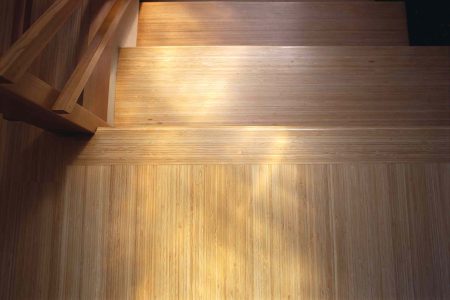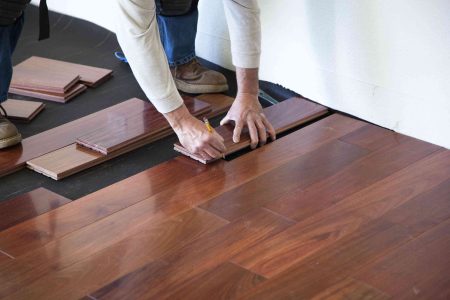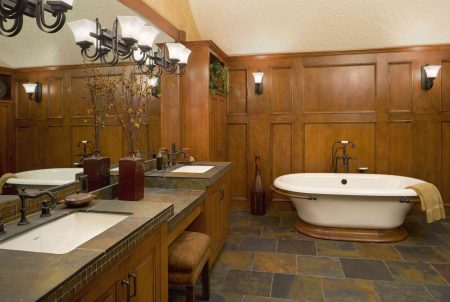A true epoxy is always a two-part product that is used by mixing a resin and hardener/activator. Epoxies do not “dry” in the same way that paints dry—through simple evaporation of water or oil-based solvent. Instead, they cure and harden through a chemical reaction between the two components.
Two-Part Epoxy Floor Coating With 100 Percent Solids
Two-part epoxy floor coatings are described as “100 percent solids” because they do not contain any traditional solvents. Two-part epoxy coatings offer the very best surface for concrete, a thick, hard, and attractive finish. These epoxy kits are often used with decorative chips that are sprinkled over the surface while it is hardening to provide a texture and attractive finish. The surface will be fully hard fairly quickly, within about 24 hours of application.
True 100-percent-solids epoxy is also the most expensive option, and it is a bit more demanding to install when compared to other types of coatings. These products emit intense fumes when applied, requiring thorough ventilation. But installing 100 percent epoxy floor coating can be done by DIYers. You can buy a kit for a one-car garage for $250 to $300, which includes application tools. EpoxyMaster, which is available from Costco or online retailers, maybe the easiest product to find.
Characteristics of true epoxy floor coating:
- Two-part product in which resin is mixed with hardener/activator
- Will be labeled “100 percent solids”
- Costs are typically $200 or more per kit
- Often applied in conjunction with vinyl paint chips
- Dries fully hard in no more than 24 hours
- Extremely smelly to apply; adequate ventilation is a must
- A very hard and long-lasting surface
Two-Part Water-Based Epoxy Floor Coating
Quikrete, and Rust-Oleum (EpoxyShield) offer popular DIY two-part epoxy floor coatings that are readily available at many home improvement, paint, and hardware stores. These are hybrid products that have the components of genuine epoxy (resin plus hardener/activator), but they also include water as a solvent. You can identify these products because they consist of two parts that are mixed together, but are cleaned up (when wet) with soap and water. They may also be advertised as “low VOC” or “low odor,” a striking difference to true epoxies, where thorough ventilation is critical.
These products typically take longer to dry and cure (2 to 3 days or more) because the solvent must evaporate fully. Because they are water-based, much like latex paint, they are considerably easier to work with than 100 percent solids epoxy floor coatings. The trade-off, however, is a thinner coating that will not last as long.
Water-based two-part epoxy coatings typically cost less than $100 per gallon. Some types can be used with vinyl color/texture chips that are sprinkled over the wet surface, while others do not accommodate color chips.
Characteristics of water-based epoxy floor coating:
- Two-part product in which resin is mixed with hardener/activator
- Costs usually between $50 and $100 per gallon
- Full drying time of 2 to 3 days or more
- Cleanup of wet tools done with soap and water
- May be labeled “low odor” or “low VOC”
- Reapplication every few years may be necessary
One-Part Floor Coating
A true epoxy floor coating is always a two-part product containing resins plus hardener/activator. Just before application, the resin is mixed with the hardener. A floor coating product that is called “epoxy” but which is sold premixed in a single container is not true epoxy, but rather should be viewed as a form of paint. While the formulation may offer better performance on a floor than standard paint, these are not true epoxy products.
Characteristics of one-part floor coating:
- Sold in a single container; no two-part mixing
- Often marketed as “one-part epoxy” or “epoxy/acrylic”
- Costs are typically less than $40 per gallon
- Quickly dries to the touch—about 1 hour
- Easy cleanup with soap and water
- Reapplication every few years is expected
Bottom Line
The right floor coating depends on how heavily the surface will be used and the conditions it will experience. While a one-part floor coating can work fine for interior surfaces that sees little use and are unlikely to experience much moisture, a garage floor or carport slab where cars are parked will be served much better with a genuine two-part epoxy consisting of 100 percent solids. An acceptable compromise between these extremes is offered by water-based two-part epoxies, which are easier to apply but more durable than one-part floor coatings.
Read the full article here



